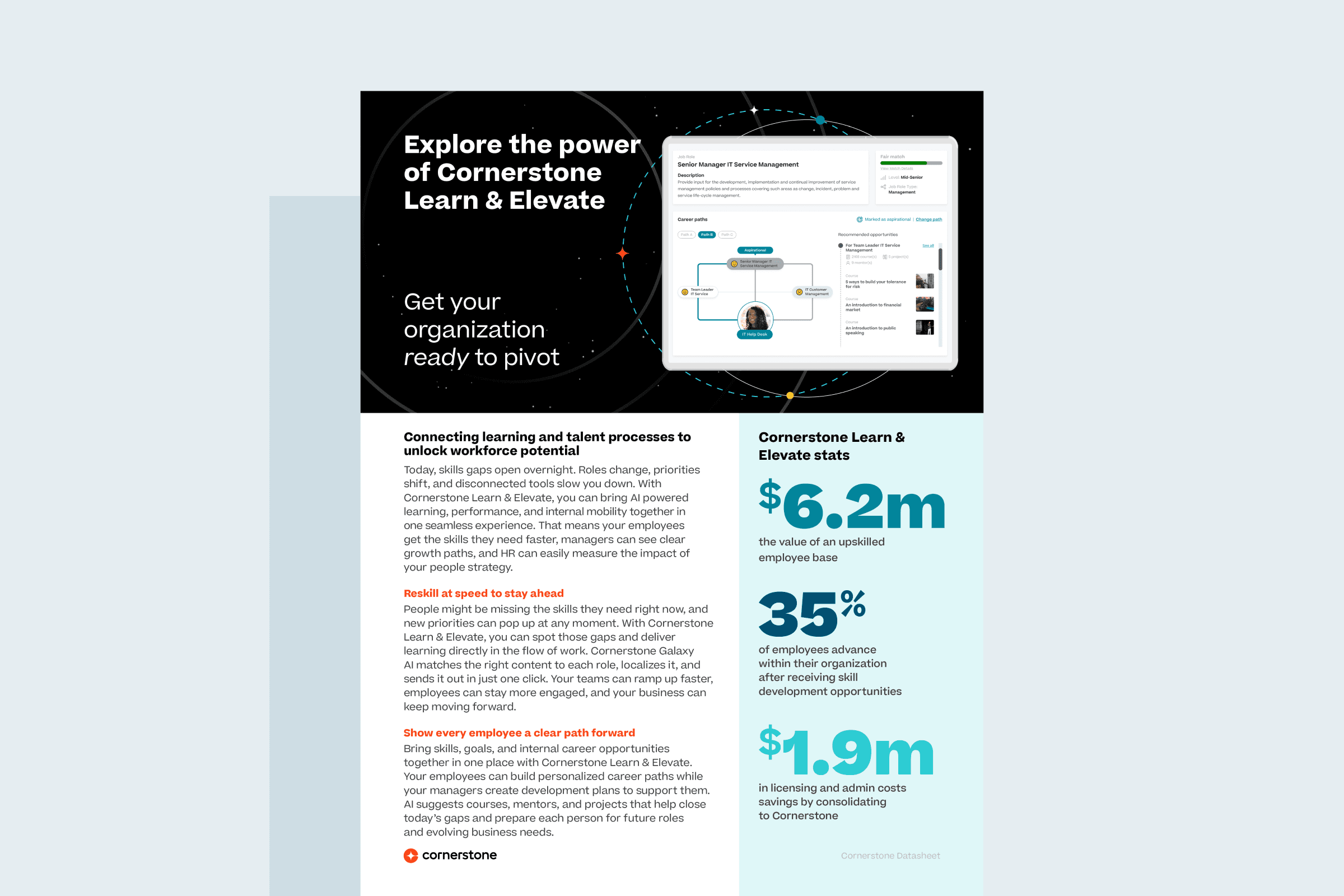In my book, Unleashing Capacity: The Hidden Human Resources, I discuss the concept of capacity: the ability for a company to anticipate and react to market changes, as well as get ahead of these disruptions to become market leaders. To effectively prepare for change, HR teams must become the owners of corporate capacity, for without human capital and the proper allocation of resources—all of which fall under HR's purview—preparedness would not be possible. It also means that company leadership must not only be savvy in proven principles of success, but also put capacity at the core of business decisions.
When most of us think of leadership principles, we consider methods of success and practices of the successful whose example we could emulate. Many of these are pretty rote at this point, but then there are some that are less known, such as those aspects of leadership that enable capacity, corporate culture and innovation.
Capacity is the key for creating an organization that thinks creatively, acts cohesively and remains dedicated to success—here's how leaders can unleash it.
Get Answers Outside the Office
Most CEOs and business leaders read daily newspapers, blogs and plenty of whitepapers. They attend conferences and networking functions, they talk to their people. But are they pulling from experiences that have nothing to do with business? A walk through the park, dinner at a new restaurant, a rock concert or an art show can spark creativity. It also spells a more well-rounded person, which creates a more effective leader.
Hire a Team that Knows Things You Don't
The greatest leaders know how to admit that they don't know everything. Capacity-driven leaders seek the best and brightest to fill those knowledge gaps. The best leaders don't have to know how everything works—they need to know how to bring those experts with different areas of expertise together to create magic.
Invest in Diversity
Homogeny can become stale, stagnant and will eventually become obsolete. Corporate diversity is important—organizations need people from various backgrounds with a variety of experience and skills working together toward two common goals: innovation and excellence. Seek diversity, pay handsomely, motivate daily, reward for performance and watch your organization thrive.
Create a Multi-Purpose Workforce
Single-task orientation creates disposable employees. Everyone in the company should add value in more than one way, particularly in a small organization. Cross-training, stretch assignments, and team projects are just a few ways to develop your employees' skills. When the company needs to pivot on a dime, you need all hands on deck ,and if those hands can accomplish multiple tasks, you'll reach your goals much faster.
Maintain Relentless Positivity
Writer Charles Swindoll once said that life is 10 percent what happens to you and 90 percent how you react to it. Your people need to feel that passion and positivity from every aspect of leadership. It's infectious and you need it to inoculate the team against malaise and fear when times get tough.
Solve Future Problems
Following a period of market disruption, many businesses focus on "the now" as they try to stay afloat in choppy market waters. To be a disruptor, find the need no one has filled and answer the question that has yet to be asked. Look for problems that will be caused by obstacles down the road and solve them.
Celebrate Successes, Then Challenge Them
It's important to mark your wins. You must celebrate, and you must let your team relish a win. But it's critical to immediately figure out how to leverage your win, learn from any mistakes or hardships and set a high bar to perform even better the next time.
Plan Your Obsolescence
Your business or market will most likely become redundant one day. This doesn't have to be a business death sentence, however, assuming you're prepared. Plan your next move before you need to make it. A culture of innovation will help make a roadmap, and capacity will ensure you're ready when the time comes to act.
Value Downtime
Overworking is passé. Millennials reject this type of working entirely, and we should follow their lead. Part of creating a capacity-driven culture means not having to run at 110 percent all the time. Create and reinforce a culture that demands for and rewards excellence while everyone is on the clock as much as it reinforces the need for time away from the office.
Practice Organizational Readiness
Capacity-driven leadership knows the time will come when the business will need to shift quickly, and it's best to practice for that occasion. Leadership should test the waters with micro-product releases or other corporate activities that help prepare the team to execute rainy day strategies.
Business longevity is no longer a given. Simply thinking about how your organization executes the things outlined above and where you fall short is a great start in assessing where you stand today. Acting to correct any shortcomings, of course, is key to ensuring success.
Photo: Creative Commons


